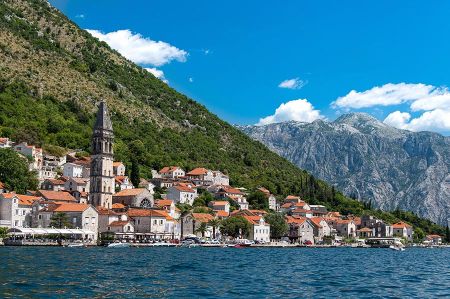Bay of Kotor – a wonderful old town awaits us
- Written by Portal Editor
After we had repeatedly avoided driving around the beautiful Bay of Kotor on the way to Albania due to time constraints (we had always used the ferry at Kemenari), this time we were supposed to take the E 65 or E 80 around the bay to Kotor, with a stopover at the beach in Perast.
Kotor is located about 50 kilometres west of Nikic, at the foot of the steep Lovcen massif, which rises to 1,749 meters, it is clear that the surrounding mountains always provide wonderful viewpoints of the city and the bay.
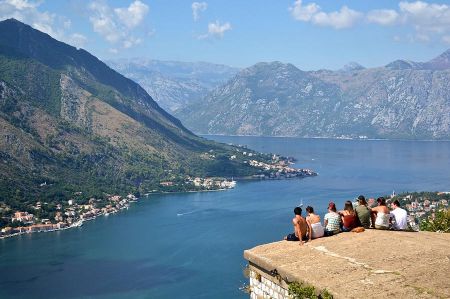 Today's UNESCO World Heritage Site Kotor is, on the one hand, the oldest city in Montenegro and, on the other hand, a charming natural harbour in the huge bay, which offered favourable protection in maritime trade for thousands of years, which attracted the Illyrians as early as the 3rd century BC, who were later followed by the Greeks and Romans. In 168 BC Kotor was first mentioned in written records as Ascrivium; The settlement by the Romans began at that time. During the Roman Empire, the city initially belonged to the province of Dalmatia. Emperor Diocletian assigned Kotor to the newly formed province of Praevalitana at the end of the 3rd century.
Today's UNESCO World Heritage Site Kotor is, on the one hand, the oldest city in Montenegro and, on the other hand, a charming natural harbour in the huge bay, which offered favourable protection in maritime trade for thousands of years, which attracted the Illyrians as early as the 3rd century BC, who were later followed by the Greeks and Romans. In 168 BC Kotor was first mentioned in written records as Ascrivium; The settlement by the Romans began at that time. During the Roman Empire, the city initially belonged to the province of Dalmatia. Emperor Diocletian assigned Kotor to the newly formed province of Praevalitana at the end of the 3rd century.
In response to the migration of peoples, Kotor was heavily fortified in Byzantine times. First, Emperor Justinian had a fortress built near Ascrivium in 535. In 840 the city was sacked by a Saracen fleet. In 1242 the city was destroyed again, this time in the Mongol storm.
Further key points of Kotor's eventful history
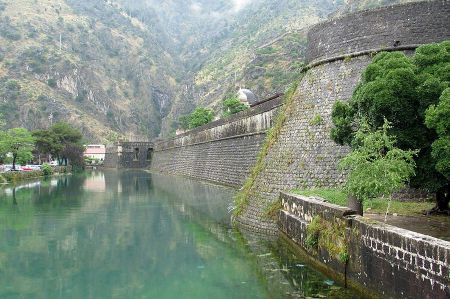 In the 10th century, Kotor was an autonomous city ruled from Byzantium. From 1186 to 1371, Kotor was a free city of medieval Serbia before briefly becoming Venetian and later Hungarian. From 1395 to 1420 Kotor was an independent republic and reverted to Venetian rule until 1797. In the Middle Ages, this natural harbour on the Adriatic coast was an important art and trade centre with its own famous schools of masonry and iconography. The city regularly suffered damage from Turkish attacks and also from fairly strong earthquakes. Between 1807 and 1814 Kotor was occupied by France. The French period was followed by Austrian rule until 1918, when Slavic sailors from the Austro-Hungarian Navy mutinied in Kotor and it was absorbed into the Kingdom of Serbs, Croats and Slovenes. From 1929 to 2003 Kotor was part of Yugoslavia. Many of the monuments, including four Romanesque churches and the city walls, were badly damaged by the 1979 earthquake but have largely been rebuilt. The place has been part of the independent state of Montenegro since 2006.
In the 10th century, Kotor was an autonomous city ruled from Byzantium. From 1186 to 1371, Kotor was a free city of medieval Serbia before briefly becoming Venetian and later Hungarian. From 1395 to 1420 Kotor was an independent republic and reverted to Venetian rule until 1797. In the Middle Ages, this natural harbour on the Adriatic coast was an important art and trade centre with its own famous schools of masonry and iconography. The city regularly suffered damage from Turkish attacks and also from fairly strong earthquakes. Between 1807 and 1814 Kotor was occupied by France. The French period was followed by Austrian rule until 1918, when Slavic sailors from the Austro-Hungarian Navy mutinied in Kotor and it was absorbed into the Kingdom of Serbs, Croats and Slovenes. From 1929 to 2003 Kotor was part of Yugoslavia. Many of the monuments, including four Romanesque churches and the city walls, were badly damaged by the 1979 earthquake but have largely been rebuilt. The place has been part of the independent state of Montenegro since 2006.
Kotor Old Town is a historical delight
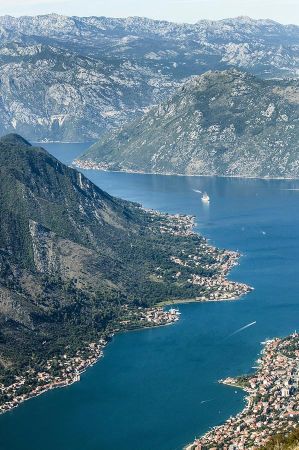 It will be clear to anyone who knows history without question that these changing rulers of the city and the bay also developed different architectural styles and therefore very different influences. With this fascinating mix of numerous architectural styles from all over Europe, which contains both spacious squares and narrow streets, the Old Town of Kotor invites you to explore in detail. A lot has changed in two thousand years of history, but the view from the city's walls and fortresses is certainly as magnificent and impressive today as it was for traveling merchants over the centuries.
It will be clear to anyone who knows history without question that these changing rulers of the city and the bay also developed different architectural styles and therefore very different influences. With this fascinating mix of numerous architectural styles from all over Europe, which contains both spacious squares and narrow streets, the Old Town of Kotor invites you to explore in detail. A lot has changed in two thousand years of history, but the view from the city's walls and fortresses is certainly as magnificent and impressive today as it was for traveling merchants over the centuries.
Much of Kotor's medieval fortresses have been preserved. The city walls extend over 4.5 km, are 2 meters to 15 meters thick and reach a maximum height of 20 meters. The main gate dates from the 16th century. The South Gate, the oldest in Kotor, was partially built in the 9th century.
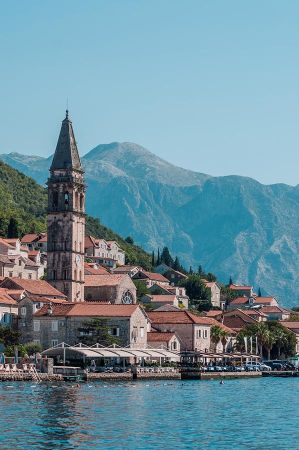 In addition to the imposing city wall, the largest and most beautiful building is probably the Saint Tryphon Cathedral. Built in 1166, it contains numerous frescoes and a treasury with a rich collection of artworks by Marin Lovra Dobricevic, Tripo Kokolj, Paolo Veroveza, Hieronim Santa Croce and other great artists. The church is in possession of gold and silver relics, which include works by local masters from the 14th to the 18th centuries. On the wall of the apse there is a golden altarpiece with the figures of Christ, the Virgin, Saint John the Baptist and Saint Tryphon as well as sixteen other saints. It is a masterpiece of Kotor goldsmithing from the 15th century. Under Venetian rule, a number of palaces were built between the 15th and 18th centuries, which still shape the cityscape today.
In addition to the imposing city wall, the largest and most beautiful building is probably the Saint Tryphon Cathedral. Built in 1166, it contains numerous frescoes and a treasury with a rich collection of artworks by Marin Lovra Dobricevic, Tripo Kokolj, Paolo Veroveza, Hieronim Santa Croce and other great artists. The church is in possession of gold and silver relics, which include works by local masters from the 14th to the 18th centuries. On the wall of the apse there is a golden altarpiece with the figures of Christ, the Virgin, Saint John the Baptist and Saint Tryphon as well as sixteen other saints. It is a masterpiece of Kotor goldsmithing from the 15th century. Under Venetian rule, a number of palaces were built between the 15th and 18th centuries, which still shape the cityscape today.
Also noteworthy is the Church of St. Luke from 1195, which was originally Roman Catholic but has been Orthodox since the 17th century. The Church of St. Mary from 1221 with medieval frescoes and the remains of a 6th-century basilica, as well as several palaces of famous families, including the 18th-century Palace of Grgurina, now a maritime museum, invite you to travel back in time a. At night the walls and fortifications above Kotor are brightly lit.
The Clock Tower - the symbol of Kotor
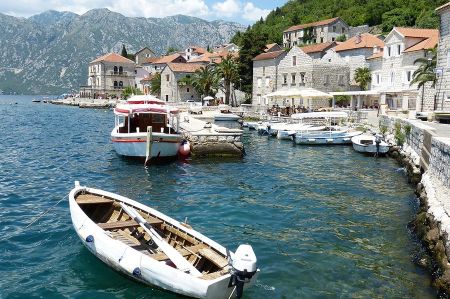 The so-called Renaissance-style clock tower is one of Kotor's landmarks. It occupies a central place opposite the main gate. It was built in 1602, but was not yet finished at the time of the 1667 earthquake and then leaned significantly to the west. Later there were some attempts to return it to an upright position, but after the catastrophic earthquake of 1979 the clock tower returned to the same position.
The so-called Renaissance-style clock tower is one of Kotor's landmarks. It occupies a central place opposite the main gate. It was built in 1602, but was not yet finished at the time of the 1667 earthquake and then leaned significantly to the west. Later there were some attempts to return it to an upright position, but after the catastrophic earthquake of 1979 the clock tower returned to the same position.
Today Kotor is a UNESCO World Heritage City
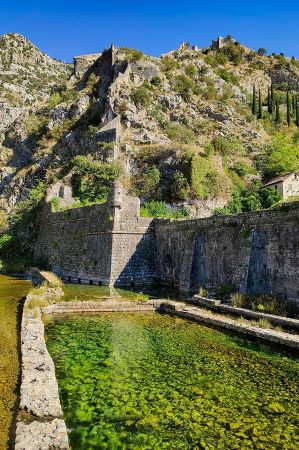 In April and May 1979, shortly before its final inscription on the UNESCO World Heritage List, Kotor was severely damaged in two strong earthquakes. As a result of this earthquake, UNESCO placed it on the list of World Heritage in Danger that same year. By 1989, much had been rebuilt with international help. In the 1990s, Kotor's status as a world heritage site was jeopardized by uncontrolled construction measures, as there are numerous violations of world heritage guidelines around the world. An example of this is the construction of the Elbe bridge near Dresden, which had almost the same impact.
In April and May 1979, shortly before its final inscription on the UNESCO World Heritage List, Kotor was severely damaged in two strong earthquakes. As a result of this earthquake, UNESCO placed it on the list of World Heritage in Danger that same year. By 1989, much had been rebuilt with international help. In the 1990s, Kotor's status as a world heritage site was jeopardized by uncontrolled construction measures, as there are numerous violations of world heritage guidelines around the world. An example of this is the construction of the Elbe bridge near Dresden, which had almost the same impact.
At the beginning of 2003, after an inventory, experts recommended removal from the list of endangered world heritage sites on the condition that an overall concept be drawn up to solve the problems of uncontrolled construction. The German World Heritage Foundation then initiated a round table in November 2003, with the result that a comprehensive concept was developed by the end of 2006, which was supported by the national authorities. The foundation cooperates with the regional institute for the protection of cultural heritage in the implementation and raises funds to implement the World Heritage guidelines in the reconstruction of the historical buildings.
The indescribable value of the Kotor region for us is particularly evident in the quality of the architecture of its fortified cities, the smaller settlements, the palaces and monasteries and their harmonious integration into the terraced landscape on the slopes. The cultural and historical region of Kotor is probably unique proof of the important role that the city and bay have played over the centuries in the spread of Mediterranean cultures in the Balkans: always worth a trip.
Please read as well:
From Podgorica – hike through the Albanian Alps
Ouranoupoli – seaside resort and port for Athos monasteries
-
 Kotor - Bay and historical old Town
Kotor - Bay and historical old Town
Kotor - Bay and historical old Town
Kotor - Bay and historical old Town
-
 Kotor - Bay and historical old Town
Kotor - Bay and historical old Town
Kotor - Bay and historical old Town
Kotor - Bay and historical old Town
-
 Kotor - Bay and historical old Town
Kotor - Bay and historical old Town
Kotor - Bay and historical old Town
Kotor - Bay and historical old Town
-
 Kotor - Bay and historical old Town
Kotor - Bay and historical old Town
Kotor - Bay and historical old Town
Kotor - Bay and historical old Town
-
 Kotor - Bay and historical old Town
Kotor - Bay and historical old Town
Kotor - Bay and historical old Town
Kotor - Bay and historical old Town
-
 Kotor - Bay and historical old Town
Kotor - Bay and historical old Town
Kotor - Bay and historical old Town
Kotor - Bay and historical old Town
-
 Kotor - Bay and historical old Town
Kotor - Bay and historical old Town
Kotor - Bay and historical old Town
Kotor - Bay and historical old Town
-
 Kotor - Bay and historical old Town
Kotor - Bay and historical old Town
Kotor - Bay and historical old Town
Kotor - Bay and historical old Town
-
 Kotor - Bay and historical old Town
Kotor - Bay and historical old Town
Kotor - Bay and historical old Town
Kotor - Bay and historical old Town
https://www.alaturka.info/en/montenegro/6573-bay-of-kotor-a-wonderful-old-town-awaits-us#sigProIded3585d4d7
